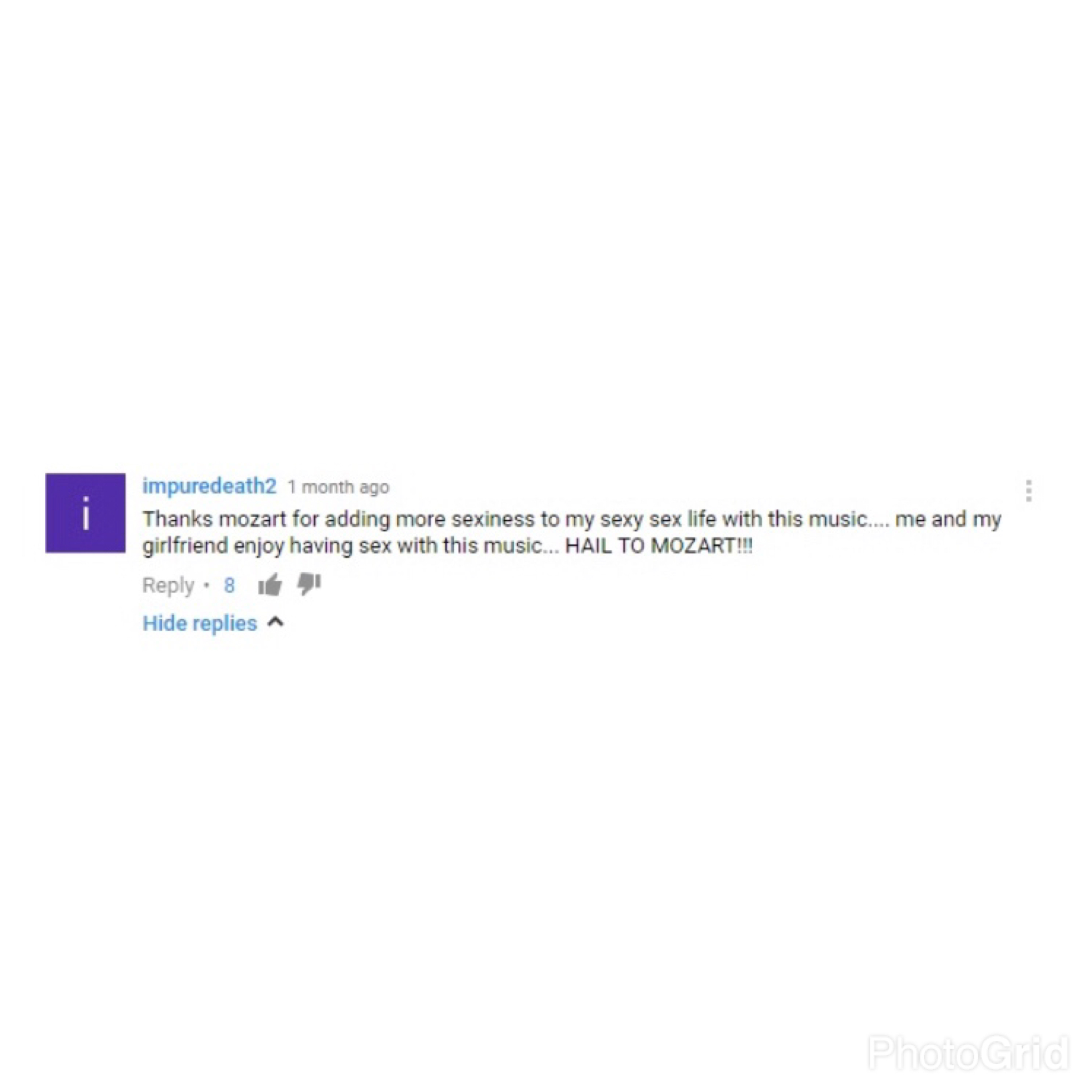Given that the entire world is currently socially distancing at home, many people have suddenly found themselves spending all of their time on the internet—so much so that YouTube has recently set the default streaming quality for all videos globally to standard definition to prevent its servers from being overwhelmed. Since being legally mandated to stay home, one of my new hobbies has been deep-diving into the niche parts of YouTube. One of my favourite finds is this Australian man’s cheese review channel, where his comments sections are filled with Italians telling this kind soul to go fuck himself.
Comments sections, especially on YouTube, provide a marvellous cross-section of a particular internet community. However, I believe that I have found some of the most chaotic commenters on the entire internet under videos of classical music. While incredibly funny to read, discourse about performances of art music actually demonstrates how toxicity online sometimes manifests.
“If this does not invigorate you then you should be buried four to six feet under,” YouTube user Duke Moose wrote in a comment on a video of scrolling sheet music.
Classical music videos by no means have the most toxic comment sections on YouTube. However, for some reason, these comments stand out in their emotional intensity, which is what seemingly drove Moose to post a death threat under a video of pages flipping. Yet by no means are all these comments so violent; there are some people that just really want others to know that they find deep meaning in classical music.
“It feels so bittersweet to me, yes it’s happy but it emits a strange kind of sadness in it. I imagine people dancing after a war, or even during one,” comments Jayce D’rick on a video of Dutch violinist André Rieu. “Or where people break down in deranged laughter; it feels like a release. Am I the only one?”
Joining the oblique violence states from users like Moose, and purple prose from users like D’rick, are a third class of comments, where users offer their honest (and sometimes downright mean) critiques.
“Sounds kind of bland, very little overtones that might be the recording though,” user vanidar21 comments on a video of a choral group performing a piece by Bach. “They clearly should have studied the german longer.”
Ever since my brother, a professional violist, turned me towards these comments, I have been absolutely fascinated by how awe-inspiringly awkward they all seem to be. Reading these comment sections is like watching a horrible car crash: I cannot look away, no matter how bad they get. But exactly how these comments got so cringey is still something that confuses me, though I do have a couple ideas.
First, like with many perplexing internet phenomena, we can blame adults from Gen-X. Audience Finder, a free database made up of ticket sales and surveys for cultural events, found that 42 per cent of the audience for classical music concerts are between the ages of 41 and 60. While this makes the average listener older than the typical YouTube user, they are still young enough to know how to use YouTube: According to data pulled from Omnicore, a health marketing research company, the 33+ age group are the fastest growing demographic on YouTube.
Second, YouTube is infamous for its vocal and frequently toxic commenters. The University of Zurich attributes this partially to YouTube’s lack of anonymity: on YouTube, users frequently use their Google accounts as they browse, meaning that their real names are attached to these comments. Contrary to popular belief, this lack of anonymity makes people more prone to aggression online. This, combined with the prevalence of older adults who may be less-than-savvy at understanding social dynamics online, could be leading to a breeding ground for inappropriate comments.
Finally, perhaps the biggest reason why these comments are so frequently awkward and toxic is that the classical music industry itself is awkward and toxic. The industry is built on a strict hierarchy, where conductors and artistic directors—often old white men—are placed in positions of power over young performers. James Levine, a former conductor of the Metropolitan Opera House in New York City, was fired in March 2018 after over 70 interviews with current and former artists corroborates accusations against him for sexual violence; the Vienna Philharmonic did not allow women to be hired until 1997, and still faces accusations of not allowing people of colour into the group. If toxicity like this is rampant in the subject matter of these videos on YouTube, it makes sense that some of it would trickle down into the comments as well.
Given that many are currently holed up in their homes looking for distractions, now is a good time to start a new hobby. Does your hobby have to be laughing at people who are just trying to have a good time on YouTube? Absolutely not! But, I believe that exploring random communities online is an interesting way of seeing how the internet can bring people together in odd and unexpected ways; perhaps a scroll through some classical music videos will prove as interesting to others as it does to me. That being said, be sure to also look for artists, like Du Yun and Julius Eastman, who challenge the industry itself to be better. Whether one’s choice of niche is classical music or not, the isolation that social distancing brings is an excellent excuse to take some time to explore other parts of the internet that you can feel a part of—or chuckle at from a distance.








